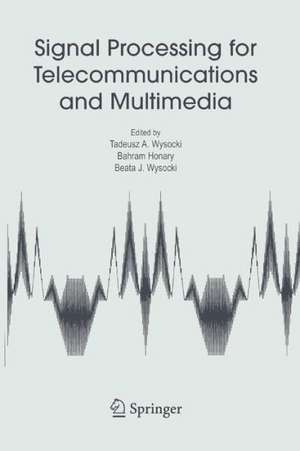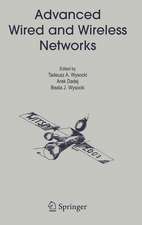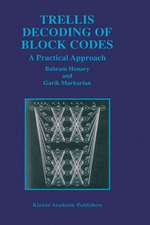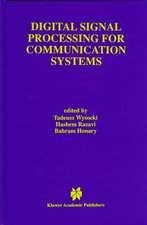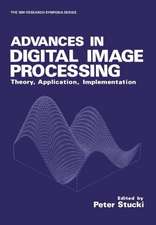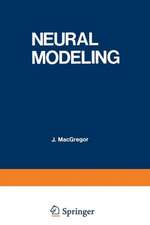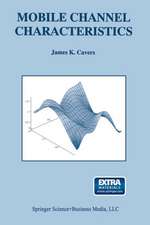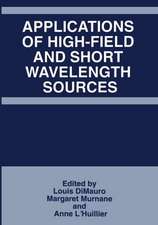Signal Processing for Telecommunications and Multimedia: Multimedia Systems and Applications, cartea 27
Editat de Tadeusz A. Wysocki, Bahram Honary, Beata J. Wysockien Limba Engleză Paperback – 23 oct 2014
| Toate formatele și edițiile | Preț | Express |
|---|---|---|
| Paperback (1) | 635.99 lei 6-8 săpt. | |
| Springer Us – 23 oct 2014 | 635.99 lei 6-8 săpt. | |
| Hardback (1) | 637.13 lei 6-8 săpt. | |
| Springer Us – oct 2004 | 637.13 lei 6-8 săpt. |
Din seria Multimedia Systems and Applications
- 20%
 Preț: 644.31 lei
Preț: 644.31 lei - 20%
 Preț: 647.10 lei
Preț: 647.10 lei - 20%
 Preț: 971.01 lei
Preț: 971.01 lei - 20%
 Preț: 987.24 lei
Preț: 987.24 lei - 20%
 Preț: 638.25 lei
Preț: 638.25 lei - 20%
 Preț: 325.87 lei
Preț: 325.87 lei - 20%
 Preț: 645.61 lei
Preț: 645.61 lei - 20%
 Preț: 646.44 lei
Preț: 646.44 lei - 20%
 Preț: 612.98 lei
Preț: 612.98 lei - 20%
 Preț: 974.66 lei
Preț: 974.66 lei - 15%
 Preț: 634.06 lei
Preț: 634.06 lei - 20%
 Preț: 632.04 lei
Preț: 632.04 lei - 20%
 Preț: 987.77 lei
Preț: 987.77 lei - 20%
 Preț: 1268.13 lei
Preț: 1268.13 lei - 20%
 Preț: 981.52 lei
Preț: 981.52 lei - 20%
 Preț: 638.43 lei
Preț: 638.43 lei - 20%
 Preț: 640.38 lei
Preț: 640.38 lei - 20%
 Preț: 982.67 lei
Preț: 982.67 lei - 20%
 Preț: 640.89 lei
Preț: 640.89 lei - 18%
 Preț: 946.01 lei
Preț: 946.01 lei - 20%
 Preț: 647.93 lei
Preț: 647.93 lei - 20%
 Preț: 647.93 lei
Preț: 647.93 lei - 18%
 Preț: 948.21 lei
Preț: 948.21 lei - 18%
 Preț: 952.92 lei
Preț: 952.92 lei - 20%
 Preț: 989.21 lei
Preț: 989.21 lei
Preț: 635.99 lei
Preț vechi: 748.22 lei
-15% Nou
Puncte Express: 954
Preț estimativ în valută:
121.80€ • 125.49$ • 102.03£
121.80€ • 125.49$ • 102.03£
Carte tipărită la comandă
Livrare economică 24 februarie-10 martie
Preluare comenzi: 021 569.72.76
Specificații
ISBN-13: 9781489991607
ISBN-10: 1489991603
Pagini: 304
Ilustrații: X, 285 p.
Dimensiuni: 155 x 235 x 16 mm
Greutate: 0.43 kg
Ediția:2005
Editura: Springer Us
Colecția Springer
Seria Multimedia Systems and Applications
Locul publicării:New York, NY, United States
ISBN-10: 1489991603
Pagini: 304
Ilustrații: X, 285 p.
Dimensiuni: 155 x 235 x 16 mm
Greutate: 0.43 kg
Ediția:2005
Editura: Springer Us
Colecția Springer
Seria Multimedia Systems and Applications
Locul publicării:New York, NY, United States
Public țintă
Professional/practitionerCuprins
Multimedia Source Processing.- A Cepstrum Domain HMM-Based Speech Enhancement Method Applied to Non-Stationary Noise.- Time Domain Blind Separation of Nonstationary Convolutively Mixed Signals.- Speech and Audio Coding Using Temporal Masking.- Objective Hybrid Image Quality Metric for In-Service Quality Assessment.- An Object-Based Highly Scalable Image Coding for Efficient Multimedia Distribution.- Classification of Video Sequences in MPEG Domain.- Error-Control Coding, Channel Access, and Detection Algorithms.- Unequal Two-Fold Turbo Codes.- Code-Aided ML Joint Delay Estimation and Frame Synchronization.- Adaptive Blind Sequence Detection for Time Varying Channel.- Optimum PSK Signal Mapping for Multi-Phase Binary-CDMA Systems.- A Complex Quadraphase CCMA Approach for Mobile Networked Systems.- Spatial Characterization of Multiple Antenna Channels.- Increasing Performance of Symmetric Layered Space-Time Systems.- New Complex Orthogonal Space-Time Block Codes of Order Eight.- Hardware Implementation.- Design of Antenna Array Using Dual Nested Complex Approximation.- Low-Cost Circularly Polarized Radial Line Slot Array Antenna for IEEE 802.11 B/G WLAN Applications.- Software Controlled Generator for Electromagnetic Compatibility Evaluation.- Unified Retiming Operations on Multidimensional Multi-Rate Digital Signal Processing Systems.- Efficient Decision Feedback Equalisation of Nonlinear Volterra Channels.- A Wideband FPGA-Based Digital DSSS Modem.- Antennas for 5–6 GHz Wireless Communication Systems.
Textul de pe ultima copertă
The unprecedented growth in the range of multimedia services offered today by modern telecommunication systems, is possible because of the advancements in signal processing technologies and algorithms. SIGNAL PROCESSING FOR TELECOMMUNICATIONS AND MULTIMEDIA presents a group of invited contributions, some of which have been based on the papers presented at the 7th International symposium on DSP for Communication Systems held in Coolangatta on the Gold Coast, Australia, in December 2003. Part I of the book deals with applications of signal processing to transform what we hear or see to the form that is most suitable for transmission or storage for a future retrieval. The first three chapters in this section are devoted to processing of speech and other audio signals. The next two chapters consider image coding and compression, while the last chapter of this part describes classification of video sequences in the MPEG domain.
Part II, consisting of eight chapters, describes the use of signal processing for enhancing performance of communication systems. This enables the most reliable and efficient use of those systems to support transmission of large volumes of data generated by multimedia applications. The topics considered in this part, range from error-control coding through some advanced problems of the code division multiple access (CDMA), to multiple-input multiple-output (MIMO) systems and space-time coding.
The last part of SIGNAL PROCESSING FOR TELECOMMUNICATIONS AND MULTIMEDIA contains seven chapters that present some emerging system implementations, utilizing signal processing to improve system performance and allow for a cost reduction. The issues considered, range from antenna design and channel equalization through multi-rate digital signal processing, to practical DSP implementation of a wideband direct sequence spread spectrum modem.
SIGNAL PROCESSING FOR TELECOMMUNICATIONS AND MULTIMEDIA is structured to meet the needs of a professional audience in industry. This book is also suitable for graduate-level students in computer science and electrical engineering.
Part II, consisting of eight chapters, describes the use of signal processing for enhancing performance of communication systems. This enables the most reliable and efficient use of those systems to support transmission of large volumes of data generated by multimedia applications. The topics considered in this part, range from error-control coding through some advanced problems of the code division multiple access (CDMA), to multiple-input multiple-output (MIMO) systems and space-time coding.
The last part of SIGNAL PROCESSING FOR TELECOMMUNICATIONS AND MULTIMEDIA contains seven chapters that present some emerging system implementations, utilizing signal processing to improve system performance and allow for a cost reduction. The issues considered, range from antenna design and channel equalization through multi-rate digital signal processing, to practical DSP implementation of a wideband direct sequence spread spectrum modem.
SIGNAL PROCESSING FOR TELECOMMUNICATIONS AND MULTIMEDIA is structured to meet the needs of a professional audience in industry. This book is also suitable for graduate-level students in computer science and electrical engineering.
Caracteristici
Includes supplementary material: sn.pub/extras
